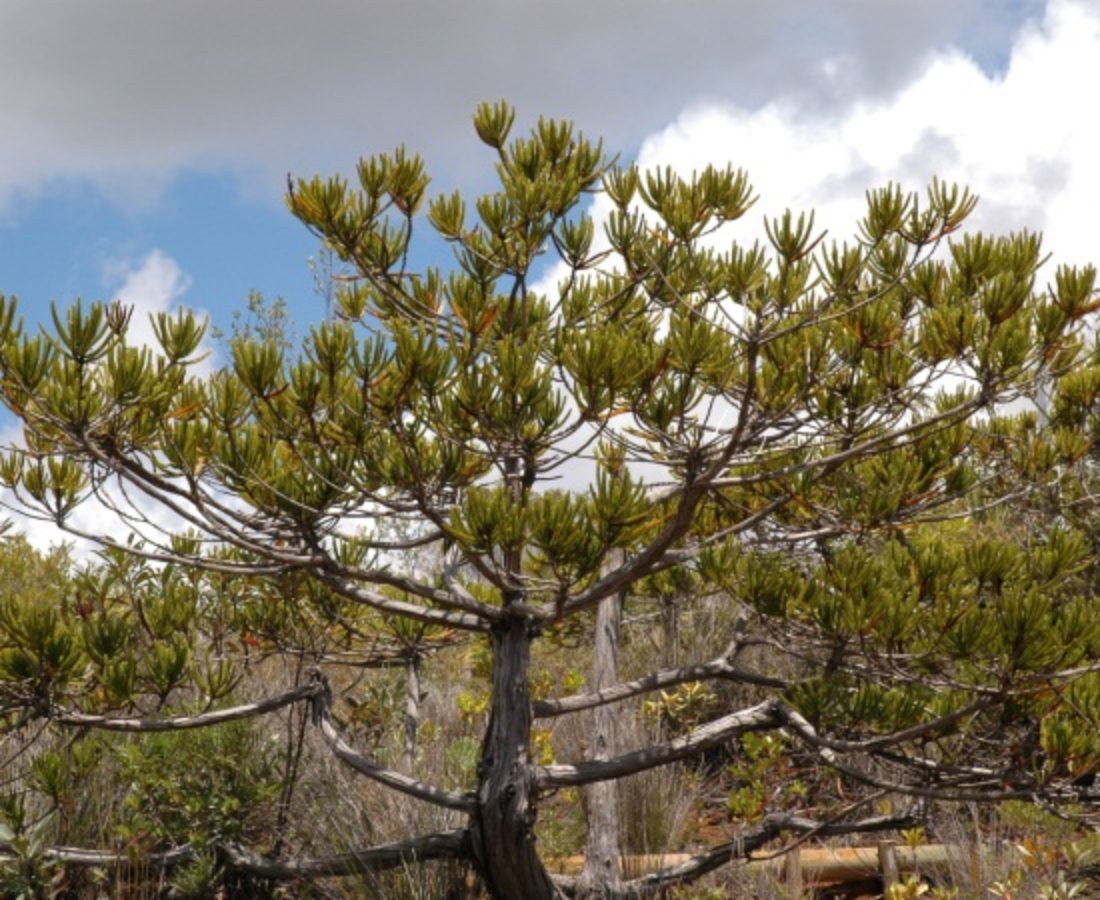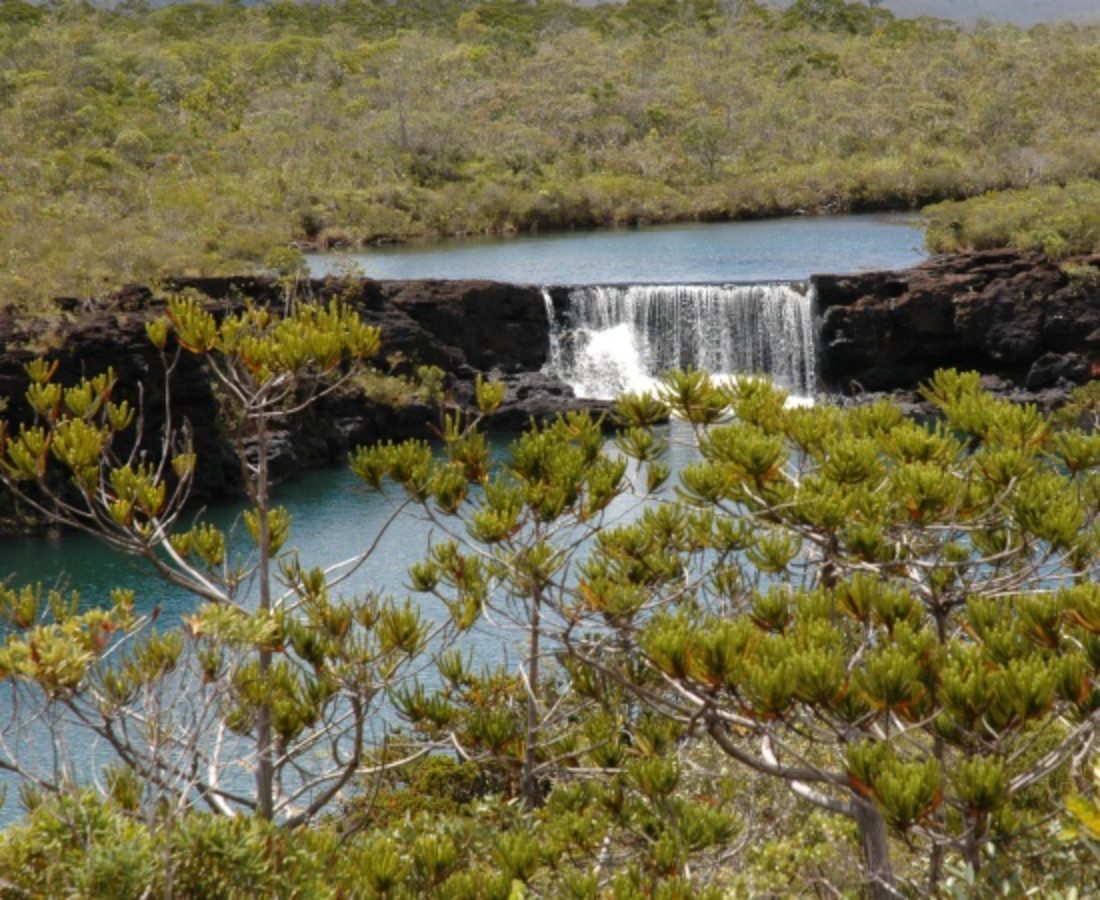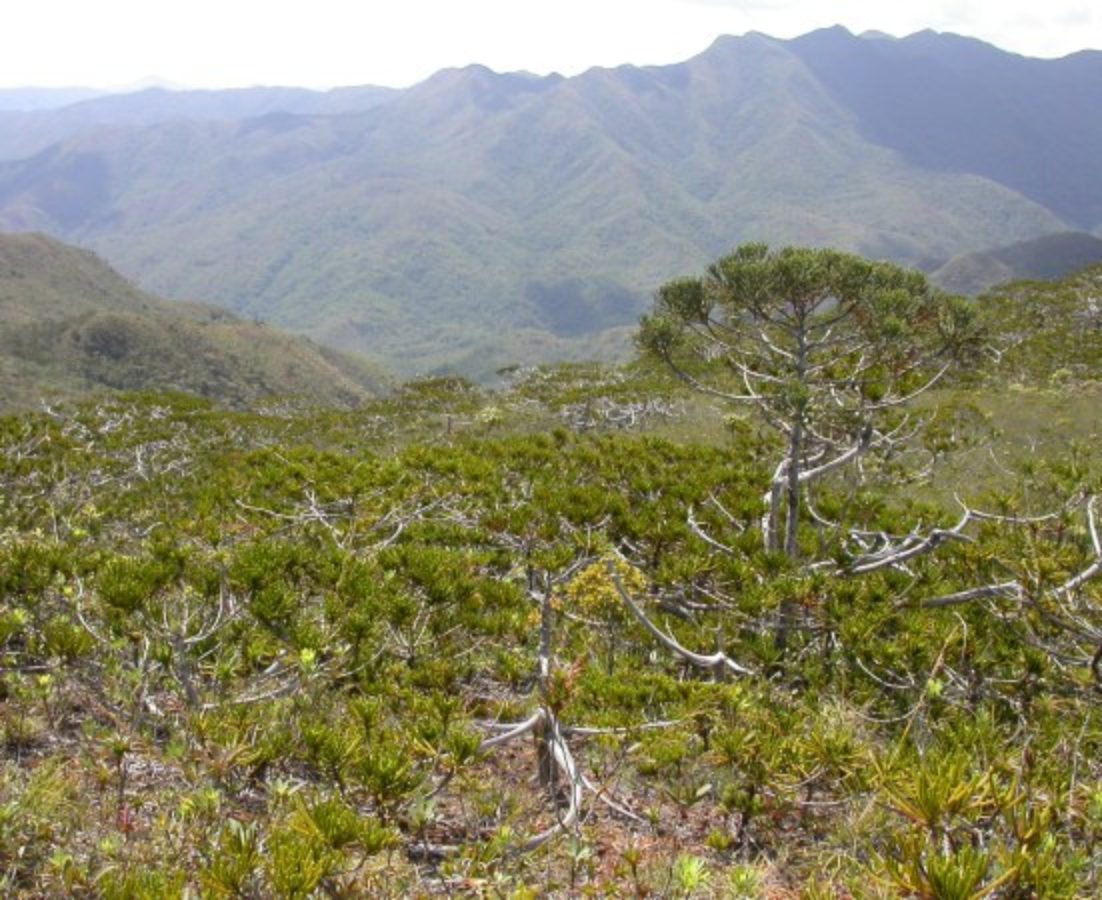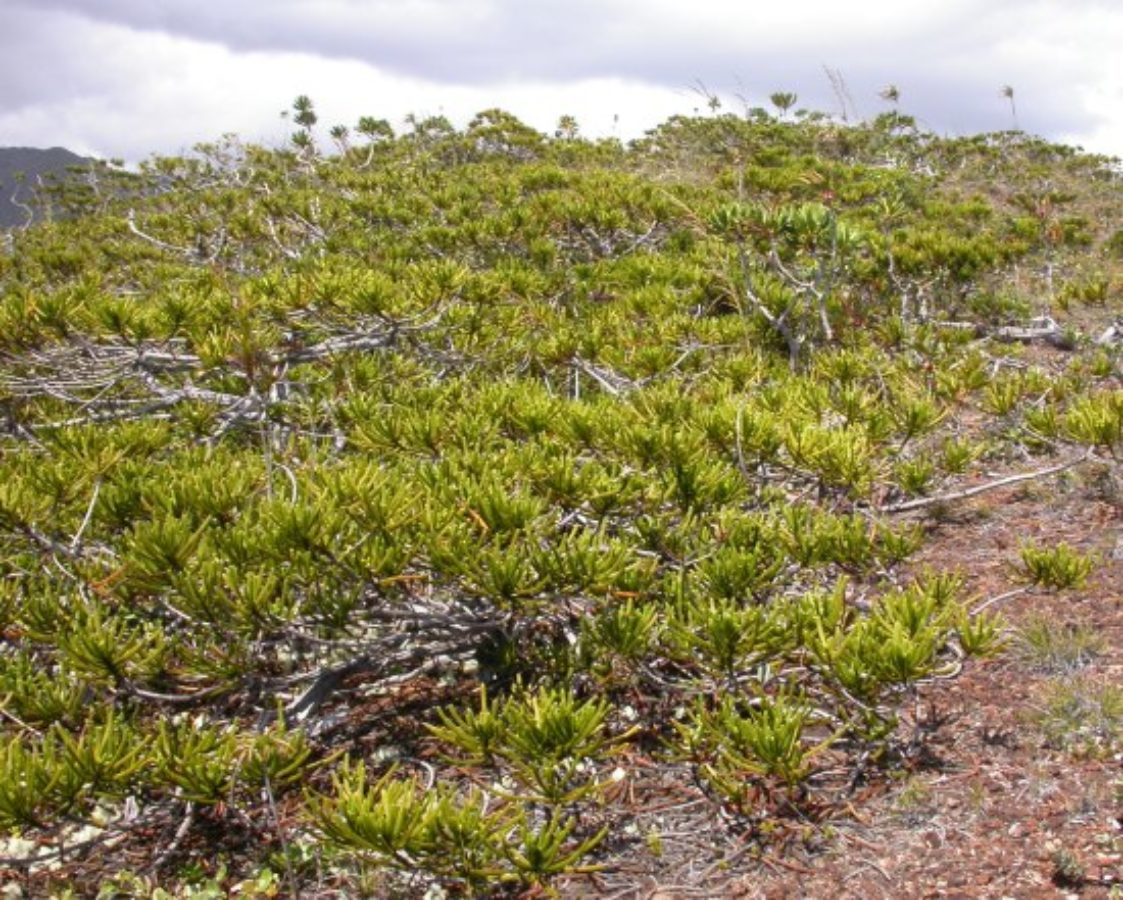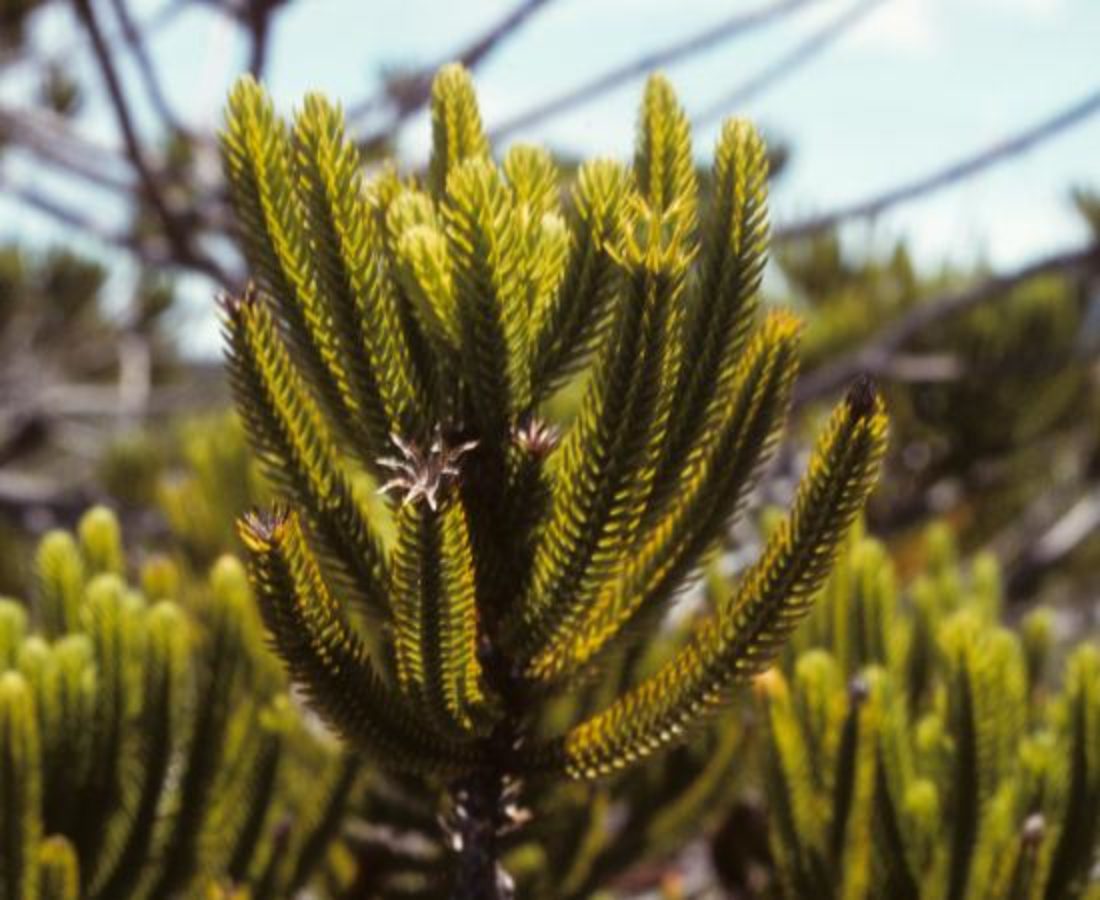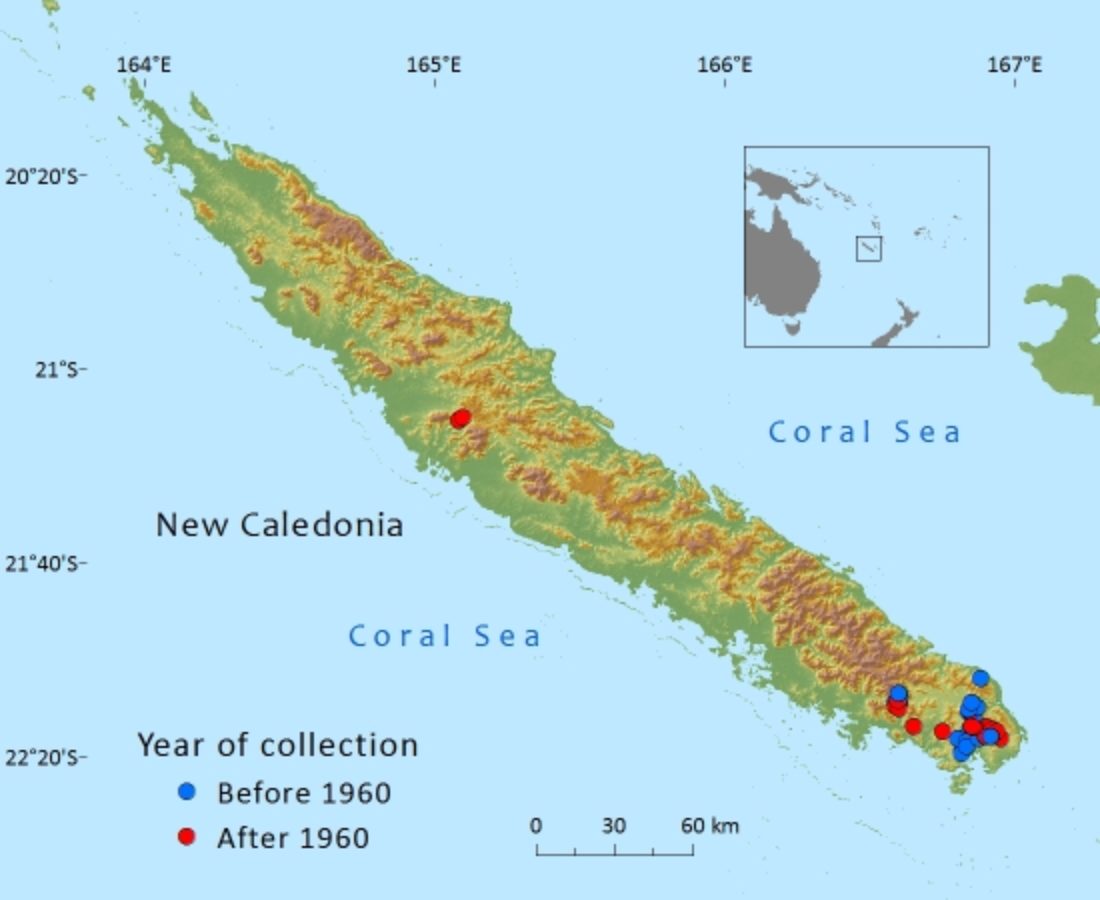Cupressaceae
Neocallitropsis pancheri
A genus with a single species which is endemic to New Caledonia where it is endangered due to fire and mining
Description
Habit
Shrub or small tree, 4–6m tall, often multistemmed. Branches wide-spreading or ascending, upper branches rising or erect, forming a conical or usually a rounded or flat-topped open crown. Bark on mature trees exfoliating in small plates or narrow strips.
Foliage
Borne in tufts of 20–30, crowded at the terminal 10–15cm of branches, rising or erect, sparsely branched or unbranched, 20 x 0.5–1.0cm, densely covered with overlapping leaves. Leaves arranged in alternate whorls of 4, 6–15 x 1.8–2.5mm, apex acute-pungent, stomata in bands above, in scattered rows below.
Cones
Male cones terminal, 10–12 x 6–7mm, subglobose to ovoid, of 3–4 alternating whorls of 4 microsporophylls, green to yellowish green. Female cones terminal, borne of short branchlets, upto 15mm long with spreading bract-scale structures; mature bract-scales in two alternating whorls of 4, the lower slightly larger than the upper, 10–12 x 3mm and 8–10 x 2mm; seeds 1–-2 per cone, 6–-7 x 2.5–3.5mm, angular–ovoid, light brown.
References and further reading
- Cherrier, J.- F. (1980). Neocallitropsis pancheri, famille des Cupressacées. Rapport Multigr. 25 p..
- Cherrier, J.- F. (1986). Proposition de protection du peuplement de Neocallitropsis paiicheri du Paéoua. Rapport Multigr., C.T.F.T. 9 p.
- de Laubenfels, D. J. (1972). Gymnospermes. In: Aubréville, A. & Leroy, J.-F. (eds.), Flore de la Nouvelle-Calédonie et Dépendances, 4. Paris: Muséum National d’Histoire Naturelle. 167 p.
- Jaffre, T. (1988). Vegetation et flore de la Chute de la Madeleine. Etude en vue d'une proposition de mise en reserve. Laboratoire de Botanique, ORSTOM. 11 pp.
- Jaffré, T., Veillon, J .-M. & Cherrier, J.-F. (1987). Sur la présence de deux Cupressaceae, Neocallitropsis pancheri (Carr.) Laubenf. et Libocedrus austrocaledonica Brongn. & Gris dans le massif du Paéoua et localités nouvelles de Gymnospermes en Nouvelle-Calédonie. Bulletin de Museum de National d'Histoire naturelle Section B Adansonia 9:3 273-288.
- Jaffré, T., Munzinger, J. & Lowry, P.P. (2010). Threats to the conifer species found on New Caledonia's ultramafic massifs and proposals for urgently needed measures to improve their protection. Biodiversity and Conservation.19(5):1485-1502.
- Suprin, B. (2011). Florilège des plantes en Nouvelle-Calédonie. Tome 1. Éditions Photosynthèse. 519 pp.
- Thomas, P. (2010). Neocallitropsis pancheri. In: IUCN 2012. IUCN Red List of Threatened Species. Version 2012.1. www.iucnredlist.org. Downloaded on 29 June 2012.
- Woltz, P. & Cherrier, J.- F. (1984). A propos du Neocallitropsis pancheri (Carr.) de Laub. Cupressaceae endémique de Nouvelle Calédonie et de l'évolution vasculaire de la plantule. Lettres botaniques (Paris) 1984, 131(3), 191-199
